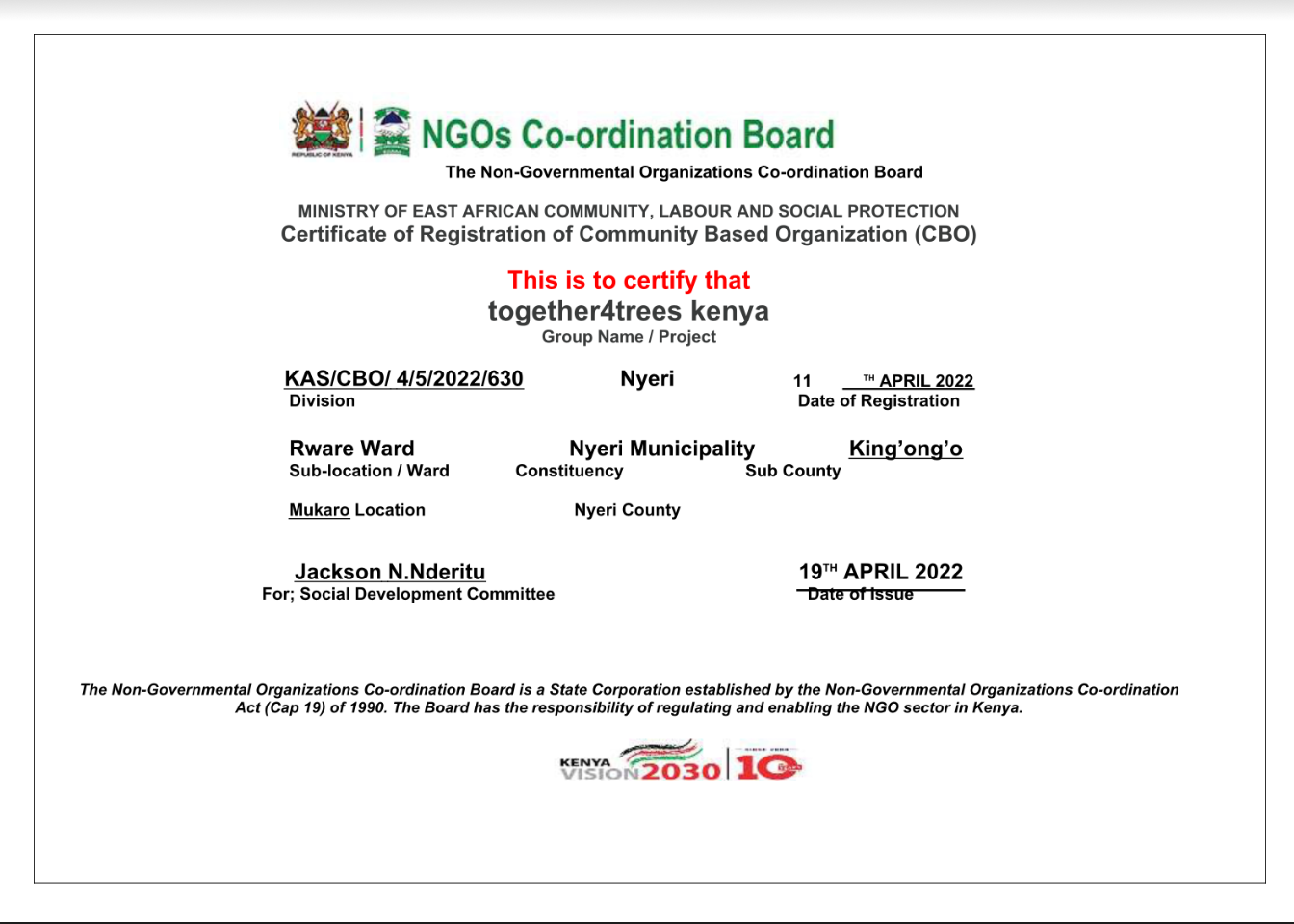Together4trees Kenya Fall 2024 Project
🌱 The organization employs 18 local people full-time, as well as 27 local volunteers. 🌳

🌳 Introduction
Kenya's forest cover has been steadily declining due to deforestation, posing a severe threat to biodiversity and local livelihoods. In response to this crisis, Together4trees Kenya, previously Giwa Climate Response, launched a series of community-driven reforestation projects in Nyeri County. Their efforts, centered around engaging local schools and communities, aim to combat deforestation while promoting environmental education.🌱

🌲 Activities and Impact
Together4trees Kenya has taken a unique approach by targeting public primary schools as the focal point for their reforestation efforts. From 2021 to 2024, they planted approximately 490,000 trees, a significant portion of which includes indigenous species like Grevillea robusta and Acacia. However, tree survival rates vary, with the organization reporting mixed success due to environmental factors like drought. While they plan to plant another 6,000 trees in September 2024, ongoing monitoring will be critical to assess the long-term impact of these efforts.
👥 Community Involvement and Partnerships
The success of Together4trees Kenya can be attributed, in part, to their robust community engagement. By working closely with local schools and employing local workers, the organization has fostered a strong sense of ownership among community members. Partnerships with international organizations like Sightspan Inc. and Global LandCare have provided the necessary resources to scale their efforts. However, the long-term sustainability of these projects remains contingent on continued funding and infrastructure support.
Full List of Partners
- Sightspan Inc. (USA)
- Global LandCare (Australia)
- Global Water Partnership (Sweden)
- River Cleanup (Belgium)
- Tree Action (UK)
- Kenya Forest Service (Kenya)
- Impactors Initiative (Dubai, UAE)
- MojoStreaming.com (Canada)

🚧 Challenges and Future Goals
Funding remains one of the most significant challenges for Together4trees Kenya, particularly for the purchase of seedlings and transportation. Despite these obstacles, the organization is committed to expanding its operations, with a goal of planting 600,000 more trees by 2029. Achieving this goal will depend on their ability to overcome these logistical hurdles and adapt to changing environmental conditions.
Species of Trees Planted in August 2024
| Species | Quantity |
|---|---|
| 1. Cupressus lusitanica | 150 |
| 2. Pinus patula | 135 |
| 3. Eucalyptus | 180 |
| 4. Grevillea robusta | 165 |
| 5. Casuarina | 185 |
| 6. Leuceana | 110 |
| 7. Cassia | 125 |
| 8. Calliandra | 190 |
| 9. Acacia | 260 |
| Total: 1,500 | |
Exact Species by Number That Will Be Planted in September 2024
| Species | Quantity |
|---|---|
| 1. Pawpaw | 255 |
| 2. Citrus | 255 |
| 3. Mangoes | 340 |
| 4. Passion fruits | 275 |
| 5. Cupressus lusitanica | 385 |
| 6. Pinus patula | 450 |
| 7. Eucalyptus | 530 |
| 8. Grevillea robusta | 515 |
| 9. Casuarina | 510 |
| 10. Leuceana | 495 |
| 11. Cassia | 495 |
| 12. Calliandra | 410 |
| 13. Acacia | 565 |
| 14. Sesbania | 520 |
| Total: 6,000 | |
📡 Commitment to Transparency and Technological Integration
In a move to increase transparency, Together4trees Kenya has adopted platforms like Restor.Eco to document and publicly track their reforestation efforts. This technology allows stakeholders to monitor project progress and ensures accountability in meeting reforestation goals. The organization’s use of such tools demonstrates a commitment to evidence-based practices in environmental restoration.
View on Restor: Mathari Primary School, Mwenji Primary School, Kihuyo Primary School

🌟 Conclusion
Together4trees Kenya offers a promising approach to tackling deforestation by engaging local communities, leveraging partnerships, and embracing technology to monitor progress. However, the challenges they face—such as funding shortfalls and environmental variability—highlight the complexities of reforestation efforts. By focusing on transparency and continual learning, the organization provides valuable insights into what it takes to restore forest cover in a sustainable way. Their journey underscores both the potential and the limitations of grassroots environmental action, serving as a model for similar initiatives worldwide that seek to balance community-driven solutions with long-term ecological resilience.
For those interested in learning more about Together4trees Kenya's reforestation efforts and community involvement, you can reach out directly to Justus at together4trees.org@gmail.com for further information.




